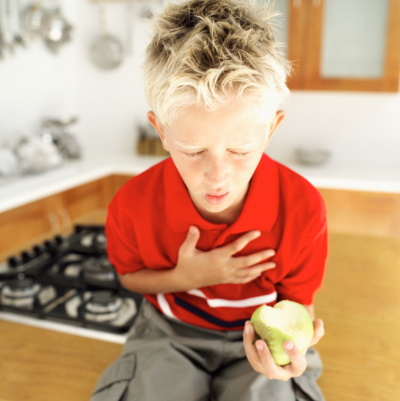Burn injuries can be among the most unpleasant and distressing experiences one can sustain. Whether it's a small kitchen area problem or a severe melt from an accident, recognizing the phases of shed injury healing is vital for efficient treatment and recuperation. In this article, we will delve deep into the intricacies of melt injuries, their classification, recovery procedures, and vital treatment techniques.
Understanding Burn Injury Recovery Presents: Healing Insights
Burns are categorized right into various degrees based on their intensity, each needing particular medical interest and treatment. The healing procedure entails unique stages that should be acknowledged to ensure correct monitoring and rehab.

What Are the Various Types of Burns?
Burns are typically categorized right into 3 primary kinds:
First-Degree Burns: These influence just the external layer of skin (skin). Symptoms consist of soreness, mild swelling, and pain.
Second-Degree Burns: These expand right into deeper layers of skin (dermis), causing blisters, serious discomfort, and swelling.
Third-Degree Burns: These involve all layers of skin and might harm hidden cells. They show up white or charred and can be pain-free as a result of nerve damage.
Each kind requires varying degrees of clinical intervention and home care strategies.
The Recovery Refine: An Overview
1. Hemostasis Phase
Immediately after a shed injury happens, the body starts the hemostasis phase to stop any type of blood loss. Capillary restrict to lower blood flow to the damaged area while platelets aggregate to create a clot.

2. Inflammatory Phase
This stage follows hemostasis and commonly lasts for 3-5 days post-injury. It includes:
- Increased blood flow to deliver immune cells. Swelling as liquids accumulate in the tissue. Pain as nerve closings become sensitized.
3. Proliferative Phase
Taking area from about day 3 to week 3 post-burn, this stage includes:
- Formation of brand-new cells through collagen deposition. Re-epithelialization where new skin cells move across the injury bed. Angiogenesis-- the development of new blood vessels-- to provide nutrients to recovery tissues.
4. Remodeling Phase
This final stage can last a number of months to years after a burn injury and is marked by:
- Maturation of collagen fibers. Decreased vascularity as structures mature. Potential for mark development relying on severity.
Importance of Specialized Burn Dressings: Vital Burn Supplies for Home Care
Proper dressing is important in taking care of shed wounds successfully in the house. Specialized shed dressings offer numerous functions:
- They shield against infections by creating an obstacle versus pathogens. They maintain wetness while allowing gases exchange which is crucial for healing. Some dressings include antimicrobial residential properties that protect against infection.
It's important to pick appropriate dressings based upon burn level and size. As an example, hydrogel dressings are frequently advised for second-degree burns due to their cooling effect.
Scar Administration: Recovering After Significant Burns
Once a shed has actually recovered, scar monitoring comes to be vital for restoring function and look:
Silicone Gel Sheets: Using these helps squash raised marks over time. Massage Treatment: Urging flow can improve flexibility in mark tissue. Laser Treatments: Medical professionals may suggest these for extra severe scarring cases.Common Misconceptions About Burn Treatment
CPR Constantly Reactivates Heart Myth: Debunking Common Burn Therapy Misconceptions
One widespread myth surrounding CPR is that it always reactivates the heart; nevertheless, this isn't real-- mouth-to-mouth resuscitation raises possibilities of survival however does not assure heart activity returns to promptly after cardiac arrest. Recognizing such misunderstandings can assist in offering exact emergency treatment throughout emergency situations involving burns or various other serious injuries.
FAQs concerning Burn Wound Healing
1. What must I do quickly after sustaining a burn?
Answer: Cool the area under running water for at least 20 mins and cover it with a tidy towel or specialized clothing if necessary.
2. The length of time does it consider burns to heal?
Answer: Healing times differ by melt level; first-degree burns normally heal within a First Aid Course Wollongong week while second-degree burns can use up to three weeks or even more depending on severity.
3. When need to I seek clinical interest for a burn?
Answer: Look for professional aid if you have second-degree burns larger than 3 inches or any kind of third-degree burns, regardless of size.
4. Can I utilize ice straight on a burn?
Answer: No, CPR Training Wollongong applying ice straight can cause more skin damages; usage cool (not cold) running water instead.
5. Exists any type of efficient natural home remedy for burns?
Answer: Aloe vera gel has relaxing residential or commercial properties that might assist with minor burns however get in touch with healthcare providers relating to considerable injuries.
6. Just how do I recognize if my burn is infected?
Answer: Indicators consist of raised inflammation, swelling, pus discharge, fever, or getting worse pain; look for immediate clinical guidance if you presume infection.
Conclusion
Understanding burn injury healing stages is important not simply for individuals but also caregivers who give assistance throughout healing phases. Knowledge about specialized treatments-- like specialized dressings-- and proactive scar administration substantially affects long-term end results after major burns occur.
Through understanding projects that stress safety around common hazards like campfires or kitchen tools-- such as crinkling irons-- we can prevent several cases before they happen! By recognizing exactly how to react with reliable emergency treatment abilities (like those educated in HLTAID012 courses), you encourage yourself with important tools that secure lives during emergencies involving burns or other significant injuries.
In recap, knowledge really is power when managing potential emergency situations associated with burns-- from comprehending therapy methods like chemical or electric burns first aid guidelines down through various child-centric issues seen within education and learning setups-- every detail issues in guaranteeing safety!
This extensive overview intends not only to educate however additionally inspire self-confidence in handling complex scenarios efficiently-- after all-- prevention integrated with prompt treatment saves lives!